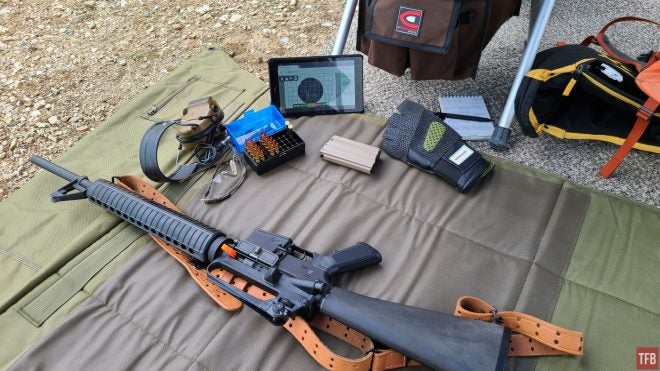Since colonial times, Americans have held shooting competitions with rifles used for militia service. These “service rifle competitions” have grown and become formalized into their own sport. Thousands of shooters participate across the country each year, with the national matches held at Camp Perry each summer. Though they are not the most high-speed or tactical event, they are an accessible sport and an excellent test of marksmanship.
More Competition Shooting @ TFB:
- POTD: Blackhawk Down! European Best Sniper Team Competition 2022
- New Rules for the 2022 CMP Smallbore Rifle Competition
- [IWA 2022] Tanfoglio’s Brand New Stock III Pro Competition Handgun
- POTD: NATO Snipers in Competition
- Sierra Introduces MatchKing Competition Ammunition Line
This has been my first year participating in CMP matches. I have a background in competition shooting from my years on the high school rifle team. Our team competed in 10-meter 3-position air rifle matches as a varsity sport. That practice gave me a very solid foundation in positional shooting and the fundamentals of marksmanship.
In the years since, competition shooting fell by the wayside as I spent my time in pursuits like building AR-15s and getting married. Well, a local service rifle club started holding regular matches and I decided it was time to get back into it.
My thoughts on this topic are those of a newbie service rifle shooter who has some relevant prior experience. I am by no means an expert or authority on this topic. But I hope that my thoughts and experiences can show that this is an accessible sport for those who are interested.
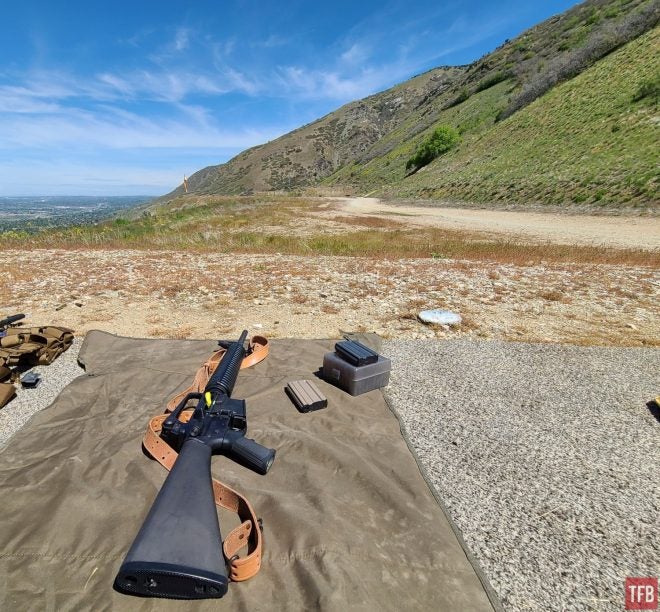
A rifle, some ammunition, and a suitable range are all you really need
What is Service Rifle Shooting?
Put briefly, service rifle matches are a competition fired with standard infantry rifles. Though they are dominated by the AR-15, older rifles like the M-14/M-1A can be used as well. Some concessions are made for match accuracy, but the goal is to maintain the “vibe” of a military rifle rather than a true match gun.
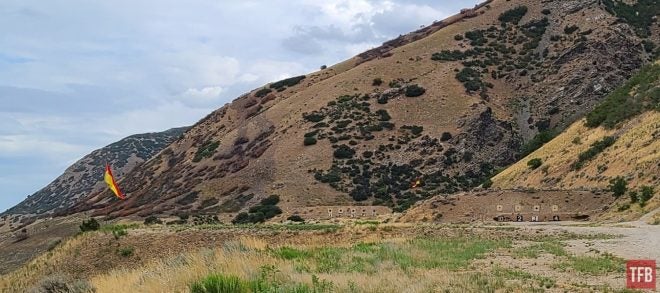
Centerville, Utah shooting range, with the 600 and 300-yard lines visible
The course of fire varies from event to event. My experience in the sport is limited, and the CMP Excellence In Competition (EIC) matches are the only ones I have done. There are some differences between NRA matches and CMP matches but we won’t get into that today. The EIC course of fire has no sighter shots. All 50 rounds are fired for score.
The course of fire is:
- slow fire standing, 10 rounds at 200 yards
- rapid fire sitting or kneeling, 10 rounds at 200 yards
- rapid fire prone, 10 rounds at 300 yards
- slow fire prone, 20 rounds at 600
Slow fire stages are fired by single loading rounds into the action, with one minute per shot. Rapid fire stages are fired from magazines with a reload during the stage. Time limits are shorter in rapid stages, 60 seconds for sitting and 70 seconds for prone. The clock also starts with the shooters standing. This means you drop into position, run the charging handle, fire two shots, reload, then fire eight shots all in about a minute.
Gear Basics – Rifles
The beauty of service rifle matches is that shooter skill matters more than equipment. This is no PRS arms race. A cheap AR-15 with a free floated handguard, 1-4x scope, and a sling is still competitive. Nicer gear has its advantages but they are not determinative.
I used an old Bushmaster ban-era A2 upper for my rookie season. The right deal came along on Gunbroker for that upper with a lower parts kit. Also, I am a sucker for carry handles and this was a perfect excuse to get another one.
Recent rule changes mean you probably already have a competition-legal AR-15 at home. Magnified optics up to 4.5x are now allowed, as are adjustable stocks. Specialized gear works better but run-of-the-mill guns can still be competitive.
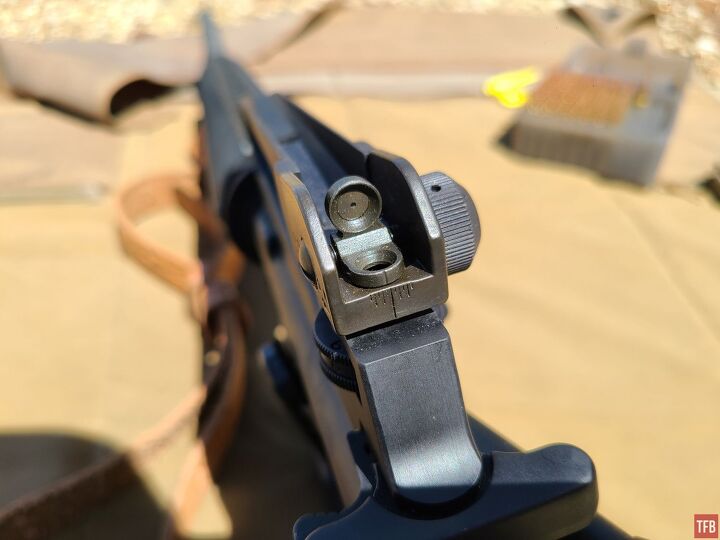
A reduced aperture in the rear aperture aids in precision
I added an Aero Precision lower and a Geissele Hi-Speed National Match trigger. I had initially planned to use an Anderson lower from my parts bin, but the Geissele trigger pins would not fit into that lower. Let that be a lesson for the “all lowers are the same” crowd. I also added some lead weights to the stock and handguard from White Oak Armament. The extra weight helps stabilize the gun in position.
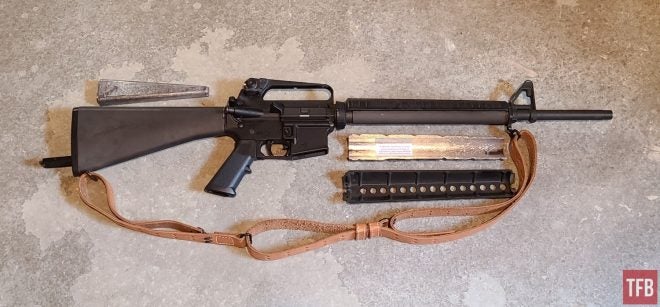
Lead weights in the stock and handguard help stabilize the rifle
Gear Basics – Other Gear
Eye and ear protection are, of course, necessary for shooting guns. Service rifle is no exception (though eye protection was only recently mandated). You will also need ammunition, preferably of match quality and in the 69-77 grain range. If your ammo budget is tight, you can use cheaper rounds in the close stages. But you will really struggle with 55-grain FMJ on the 600-yard line.
Formal data books are standard among dedicated service rifle competitors. But if you are just starting out, make sure you have some way to make notes. Recording data on the windage and elevation corrections you make can help you with what adjustments you need for the next match.
Other gear like a shooting coat and prone mat are very nice to have and worth buying. But if you just want to go try out a match, don’t stress out if you don’t have them. Other shooters will be happy to share a prone mat with a new shooter. Also, some clubs and many shooters have spare shooting coats you can borrow if you ask ahead of time.
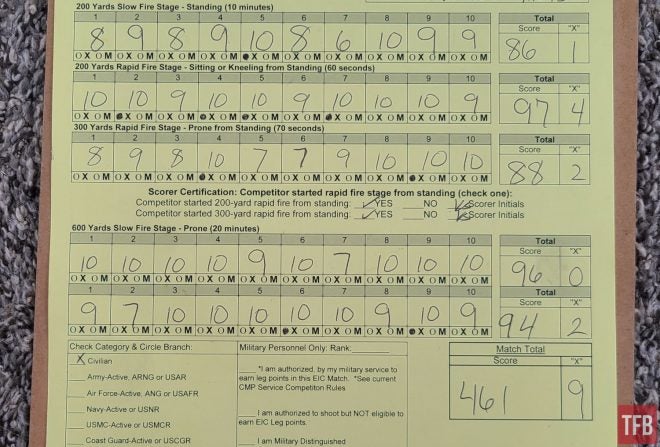
A score card from a recent match
Conclusion
You should look up your local club and go try a match if any of this sounds interesting. The participants usually skew a little older, but they are happy to have new blood join the ranks. It is possible to compete without spending a fortune on equipment and to have a great time shooting a rifle you probably already have. I hope to see you at the range soon.
 Your Privacy Choices
Your Privacy Choices
